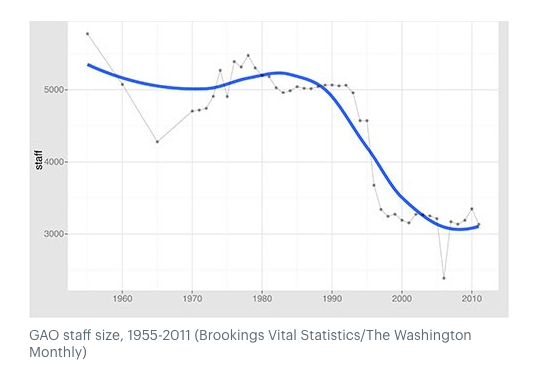WEALTH BEGETS WEALTH
Matt Bruenig’s Social Wealth Fund proposal, and responses
Last week, MATT BRUENIG of the PEOPLE’S POLICY PROJECT published the most detailed version of a bold policy he’s been writing about for a long time: a Social Wealth Fund for America.
“If we want to get serious about reducing wealth and income inequality, then we have to get serious about breaking up this extreme concentration of wealth.
A dividend-paying social wealth fund provides a natural solution to this problem. It reduces wealth inequality by moving wealth out of the hands of the rich who currently own it and into a collective fund that everyone in the country owns an equal part of. It then reduces income inequality by redirecting capital income away from the affluent and parceling it out as a universal basic dividend that goes out to everyone in society.”
The full report contains history on Sweden and Norway, information on the Alaska Permanent Fund, and then a sketch of the “American Solidarity Fund,” including funding and governance. The report stakes conceptual ground, and doesn’t offer new macroeconomic analysis. Link.
- Matt Yglesias summarizes and adds context in Vox, noting that Bruenig’s political angle is not imperative for the SWF idea. Other proposals for government stock ownership “invariably conceptualize the government as a silent partner in the enterprises it would partially own, trying to find a way for the government to reap the fiscal or economic benefits of government stock ownership without the socialistic implications of government officials running private firms. Bruenig’s proposal is the opposite of that, a way to put real meat on the bones of “democratic socialism” at a time when the phrase is gaining momentum as a slogan and an organizing project but also, to an extent, lacks clear definition.” Link.
- In an illustration of Yglesias’s point, Roger Farmer, who has suggested funding a SWF through countercyclical asset purchases, makes his ideological differences clear on Twitter: “You don’t have to be a Democratic Socialist to see value in a scheme whereby government borrows and invests in the stock market…unlike Matt Bruenig I do not see this as a tool for political control of corporate agendas and I have advocated that the Treasury purchase an index fund of non-voting shares.” Link.
- Mike Konczal criticizes the SWF idea along multiple lines. “We want shareholders to ruthlessly extract profits, but here for the public, yet we also want the viciousness of market relations subjected to the broader good. Approaching this as shareholders is probably the worst point of contact to try and fix this essential conflict.” Link.
- Bruenig responds to Konczal. Link.
- Peter Gowan expands on the idea in Jacobin: “Following [Rudolf] Meidner, I think it is worth considering multiple social wealth funds to be established along sectoral lines.” Link.
- Rachel Cohen gets responses from Peter Barnes and others in the Intercept. Link.
DORMANT IMPACT
On the now-defunct Congressional Office of Technology Assessment
If Sheryl Sandberg and Jack Dorsey had testified before Congress between 1972 and 1995 (rather than this past week), lawmakers’ questioning would likely have been informed by research from the Congressional Office of Technology Assessment (OTA), which was tasked with providing “objective and authoritative analysis of complex scientific and technical issues.”
A 2015 Room for Debate column in the NEW YORK TIMES reconsiders the now-defunct OTA (1972-1995) and the more than 750 reports it published to Congress. CELIA WEXLER explains that lawmakers used the OTA to make effective policy decisions on a huge variety of technical issues:
“A 1984 study questioning the reliability of polygraph tests led Congress to enact limits on their use by employers. Another report from 1994 helped lawmakers assess the Social Security Administration’s computer procurement plan, and ended up saving the government $368 million. OTA reports in 1987 and 1990, which concluded that Pap smears and mammograms for older women could save thousands of lives, were instrumental in extending Medicare reimbursement for these tests.”

In a 2015 article for THE ATLANTIC, STEVEN TELES and LEE DRUTMAN cite the OTA’s closure in arguing that staff shrinkage leaves Congress increasingly isolated from the knowledge and expertise required for prudent oversight and lawmaking: “Specialization is the hand-maiden of economic growth. But as societies become more specialized, they also become harder to comprehend. With each passing year there are more products and services; there are new technologies; there is more relevant scientific knowledge. To legislate intelligently on any subject requires considerably more information and conceptual sophistication than it did at the dawn of the Reagan administration.” Link to the article.
ht Will for the links in this spotlight.
- The annual Brookings report Vital Statistics on Congress shows that the OTA’s 1995 closure is part of a larger trend of diminishing and stagnating employment for Congressional staff. As CURTLYN KRAMER notes, “growing responsibility without corresponding growth in staff means that Congress’s members and staff must stretch their resources. The problem is, what Congress has to do to stretch the capacity of their existing workforce further does little to increase real efficiency, and instead forces adaptations that hurt congressional independence.” Link.
- In a highly-cited 2006 American Political Science Review article, RICHARD HALL and ALAN DEARDORFF argue that the most accurate model of lobbyist behavior treats lobbying as a form of legislative subsidy, capitalizing on shrinking legislative resources: “Direct lobbying… typically is not a strategy for changing legislators’ preferences over policies… it is an attempt to subsidize the legislative resources of members who already support the cause of the group… it is akin more to a gift than a trade. It is more like a ‘service bureau’ than a signaling process.” Link.
- Princeton maintains an OTA archive of “all the formally issued reports of the Office of Technology Assessment, as well as many background papers and contractor papers – over 100,000 pages of the best available analyses of the scientific and technical policy issues of the past two decades.” Link.
+++
- The Urban Institute published a research brief on proposed changes to the federal safety net, which utilizes new data on material hardship from their 2017 Well-Being and Basic Needs Survey (WBNS): “Measuring a family’s ability to meet basic needs can provide a broader understanding of well-being than income-based poverty indicators…The (WBNS) tracks individual and family well-being at a time when the economy is improving but the safety net may be changing significantly.” Link. ht Lauren
- Overstating the filter bubble: “In real-world testing on a diverse sample, news recommendations were homogenous.” Link. (See also this previously shared Knight Foundation review from Brendan Nyhan et all on the same topic. Link.)
- “Death, Trauma, and God”: new NBER paper by Raul Cesur, Travis Freidman and Joseph Sabia looks at the effects of military service on religiosity. Link.
- From VoxEU, economists Neil Cummins and Gregory Clark track two centuries of migration in England and suggest that Northern decline “can be explained by persistent outmigration of talent from the North.” Link.
- From Bloomberg, Noah Smith discusses the role of economists in the revived anti-trust movement: “Economists are growing more concerned about the threat posed by corporate power. The budding antitrust movement will offer them valuable ideas, data and intellectual heft in its quest to stem the rampant power of industrial giants.” Link.
- A new blog post for Naked Capitalism “emphasize[s] that lack of upward mobility is more powerful than mere inequality in inducing deep economic grievances.” Link. ht Sidhya
- Roger Farmer weighs in on the secular stagnation debate between Stiglitz and Summers. Link.
- In response to the Sanders-Khanna Stop BEZOS bill, which requires firms with more than 500 employees to pay taxes equalling safety net benefits received by employees and their families, the CBPP published a blog post warning of perverse consequences. Link. See also these threads from JFI Letter mainstay Arindrajit Dube: “If the problem is low-end pay, a direct tool is to raise the minimum wage. That avoids discriminatory incentives, and incentives to lobby to lower public assistance. Want to go further? Consider wage boards to raise pay for not only those at the very bottom but also the middle.”
- Historian Andy Seal is writing a series of posts at the Society for US Intellectual History on the new History of Capitalism, the first of which periodizes the field. Link.
- At Aeon, economist Ola Olsson with an excellent essay delving into his research (published last winter) on the relationship between scurvy and the birth of the Sicillian Mafia. “A major catalyst for the rise of the mafia in Sicily was the surge in demand for lemons and oranges that began in the first half of the 19th century. But to understand how fruit cultivation could lead to organised crime, we need to go back even further, to the conditions prevailing in the British Royal Navy in the 18th century.” Link to the essay, link to the paper.
Filed Under
Each week we highlight research from a graduate student, postdoc, or early-career professor. Send us recommendations: editorial@jainfamilyinstitute.org
